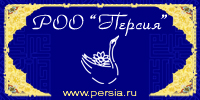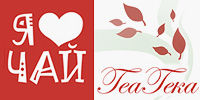 A picture story about the Egyptian town of Luxor, its past as one of the centres of Ancient Egyptian civilization, and its present, opens the last issue of this year.
A picture story about the Egyptian town of Luxor, its past as one of the centres of Ancient Egyptian civilization, and its present, opens the last issue of this year.
2006 - Year of Russia in China
- Aleksandr Khokhlov. On the Ruins of Chuguchak. The author tells about the journey of Vasiliy Vereschagin, a prominent Russian artist, to the Northeast of China, in 1869-1870. Appended is a publication of Vereschagin’s travelogue and an unfinished article, ’Impressions of War’.
- Konstantin Pistsov. ’Strangest Creatures’ on a Luxurious Caftan. The images of various animals, both real and imaginary, played a great role in decoration of the official dress in Medieval China. The dress of Ming and Qing officials is decorated fully in line with this well-known idea.
- Yelena Taskina. Through the eyes of Russian Artists. When, by the whim of Fate, Russian artists found themselves abroad, in China, they continued to produce creative works, featuring both the images of Russia and the life of the people of China, which they became to consider a part of their own life.
- Tatyana Yermakova. A Letter from the Great European Mission. Publication of a letter from Russian Buddologist Fedor Scherbatskoy to Aleksandr Samoilovich. In 1920, Fedor Scherbatskoy was sent to Europe with a mission to re-establish academic relations with foreign scholars.
- Dmitriy Sevruk. The Alavites of Syria: Under Cover of Mystery. The Alavites are one of the sects in Islam, which borrowed a lot from Christianity, especially in their teaching and rituals. The information about them is extremely scarce, because the adepts hold it that the hidden meaning of the Alavite worship may be revealed only to the initiated. The author tells about the modern Alavites of Syria and their history, and also publishes a fragment of Suleiman al-Adani’s work on Alavite holidays.
- An essay by Vladimir Lebedev, ’Topped with a Double Crown’, and an article by Roman Orekhov, ’A Woman as a Pharaoh’, open this section. Both are devoted to one of the most mysterious persons in the history of Ancient Egypt, Queen Hatshepsut, who became a Pharaoh by combination of circumstances. Who was she? What was she like? Such are the questions posed and answered by the authors.
- Ilya Zaitsev. Forbidden Animals in Islam. It is well known that Islam considers pigs, as well as dogs, to be unclean, forbidden animals. This unconditional taboo, which exists since times immemorial, is reflected in folklore, literature, and social relations. "Not long ago, Israeli settlers have been forced to leave Gaza Strip," writes the author. "When leaving, they intentionally painted pig’s heads outside and inside their houses, so that Moslems could not settle there."
- Aleksey Novikovskiy. A Journey to the Age of Juche. Even if it is bound by strict regulations, a journey of two Russian tourists through North Korea may produce a lot of interesting impressions. The key point is to look without prejudice on the life of Koreans in the age of Juche. "I would like to believe that the day will come, when all Koreans will really live in one great and powerful country," such is the final remark of the author.
- Rustam Mirzaev. A Scull-Cap Fits Everyone. Scull-cap is a traditional headdress of many peoples in Central Asia. Besides sheer practicality, it has always been a decoration of a traditional costume. There are many varieties of scull-caps in Uzbekistan, including those from Ferghana, Kashka-Darya, Bukhara, Tashkent, as well as those for children, women, etc.
- Vladimir Belyakov. A Master of the Faberge School. Many years of search in archives and libraries and meeting in various town of Egypt, enabled the author to re-create the story of life and creative work of Russian sculptor Boris Fredman Cluzel, who in the course of the 20th century left his original trace in the art of modern Egypt.
- Viktor Pogadaev. Not Every Peranakan is a Baba-Nyonya. The Chinese who have been living in the Malay Peninsula since the 15th century acquired, in the course of years, many customs and habits of the Malays. This mixed ’baba-nyonya’ culture still exists, but globalisation is felt here also, and many features of this culture pass into history.
- Aleksandr Kadyrbaev. Baron Ungern’s Panmongolian Utopia. One of the leaders of Russian White movement was obsessed with the idea of uniting the peoples of Central Asia under the banner of panmongolism, as is evident from his letters, which are published in our magazine.
- Nina Konovalova. A Dream of a Small House. Lately, more and more small houses of original design appear in Japanese cities and towns. Their owners are not poor, on the contrary, they are quite well-to-do people, and on their order the architects and designers create unique solutions of inner space and exterior of such mini-houses.
- Konstantin Bannikov. An Unnecessary Thing Means Extra Trouble. This principle have never let down the Bajau people of Kalimantan, who are also called ’sea gypsies’. Living in the boats on water, moving from one place to another if needed, they have produced a specific culture.
- In the end of this issue our reader will find traditional "Orientnet" column, which features links to Web sites about Omar Khayyam.
You can find the summaries of the previous issues online, by visiting our section of the Russian State Library Web-site: http://orient.rsl.ru/en/






